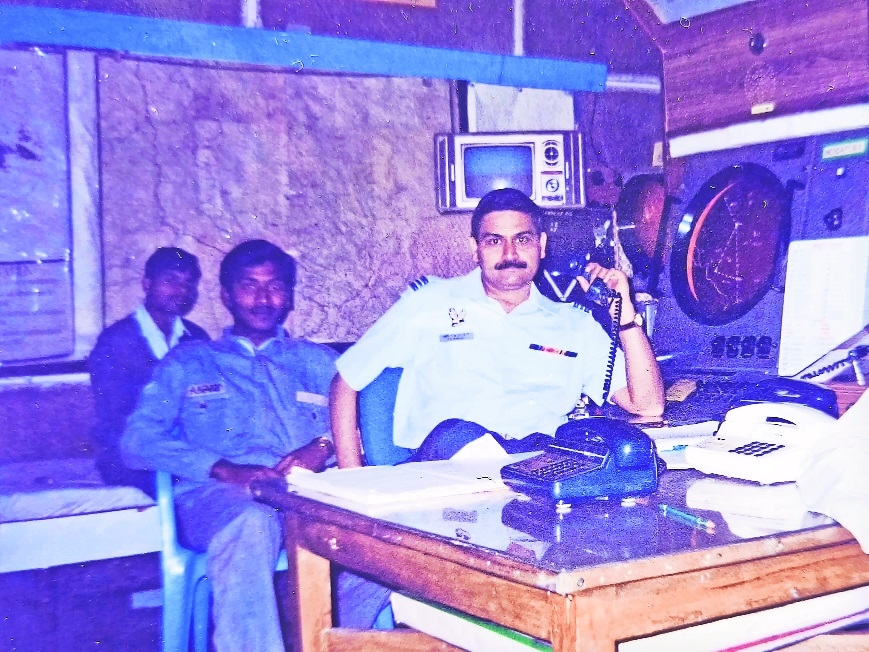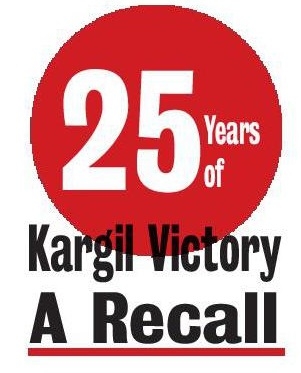When the innovative use of Malayali language helped neutralise intruders...
| Date :26-Jul-2024 |

By Kaushik Bhattacharya :
To prevent the Indian message from getting
intercepted or leaked was most important, says Group Captain
Vijay Hardas (Retd), recollecting
his war story

The Kargil War presented significant communication challenges, aggravated by the rugged terrain and harsh weather of the region. Maintaining secure and reliable communication lines was crucial for co-ordinating operations in the challenging terrain. But, most important point was to prevent the Indian message from getting intercepted or leaked. On one occasion, a Nagpurian officer implemented an innovative idea to pass a message to own posts by taking advantage of linguistic diversity of India.
The Nagpurian officer is Group Captain Vijay Hardas (Retd), who was the Commanding Officer (CO) of an Air Traffic Radar Surveillance Unit (ATRSU) on one of the most strategically important posts at Natha Top during Kargil War. He found a unique way to send information to other posts and the headquarters quickly.
As the country celebrates the Silver Jubilee of Kargil Vijay Diwas with enthusiasm, he recalls, “Though we had communication equipment to pass on the information to other posts or to our seniors about enemy movement, the chances of information leak was always there.”
From the post where he was commanding a small unit having personnel from the State CID, J&K Police, the Indian Army, and the Indian Air
Force, India had the capability to view the air movement deep inside the enemy territory even upto Karachi and Islamabad.
During the Kargil War of 1999, India radar-monitored each and every enemy movement and passed on information about any suspicious activity to the headquarters, he adds.
One day, Gp Capt Hardas intercepted an enemy conversation in which
the intruders were discussing about
Contd from page 1 conducting funeral meeting for all the killed intruders. It was to be attended by some others from deep inside Indian territory. The CO of the unit wanted to share this information to the headquarters, but it would have taken too long, and there were high chances of the information getting intercepted by the enemy.
Therefore, he came up with a unique idea -- of using ‘Malayalam’ language for passing on the crucial information. “I shared the information with one of my soldiers, who was a Malayali, and instructed him to share the same in Malayalam language to another Malayali soldier at the next post to avoid interception as the intruders were unable to decode the information in the toughest language of India,” Gp Capt Hardas tells ‘The Hitavada’ with a smile. Thereafter, the soldier in another post relayed the same information to the headquarters in Malayalam language. With the help of this unique technique, the information reached the headquarters within a couple of hours and all the intruders who had gathered at a secret location were neutralised, he recalls with pride. Gp Capt Hardas (Retd) elaborates that his unit, including him, were trained in Pashtu language, which was normally used by the terrorists to communicate with each other. “We intercepted that particular message in Pashtu language with the help of a smart communication set capable of intercepting 32 different radio frequencies at a time. The smart radio set was a game-changer in the war as we used it throughout the conflict and intercepted many enemy conversations and transferred it to the headquarters,” he adds. The unit was always on high alert to respond effectively to any possibility of intrusion considering the equipment at its disposal.
“The post was so secure that every senior Army, Air Force official had to pre-intimate us about their arrival to the post. I never permitted entry to any serving personnel till there was a valid reason and requirement to be at the unit,” he informs ‘The Hitavada’. Commanding from the unit was a unique experience for him as an Air Force officer. His entire team consisting of the Armed Forces personnel and security forces personnel, was well trained in respective fields. According to Gp Capt Hardas (Retd), that was the reason all of them were deployed at Natha Top, which was the most important strategic post for India during that time. “During the war, we had state-of-the-art equipment and gadgets on our post that helped us to monitor the enemy movement in their side. We were observing enemy movement far away during night with the help of Night Vision Goggles (NVGs).
We had smart radio sets, which could capture 32 frequencies at a time, and also a Russia-made Air Route Surveillance Radar (ARSR) having a range of 200 miles,” recollects the veteran. Interestingly, the IAF officer had special permission to take his wife and a two-and-a-half-year-old son to the forward post. It is not permissible to other officers and soldiers during war-time but his wife Flt Lt Karuna Hardas (Retd) and son were allowed as she was serving then and their son was too young, he explains. During the Kargil War, more than 2.5 lakh ammunitions including missiles, bombs and bullets were used. More than 6,000 bombs were used by India to capture Tiger Hill, which was the most important strategic feature for India during the war, says Gp Capt Hardas (Retd). The war is an excellent example of co-ordination among the Indian forces driven by the desire to protect the territory from the enemy. It is this resolve that makes a man a soldier. That is why, the tales of heroes in uniform live on, 25 years after the war, and up to eternity.